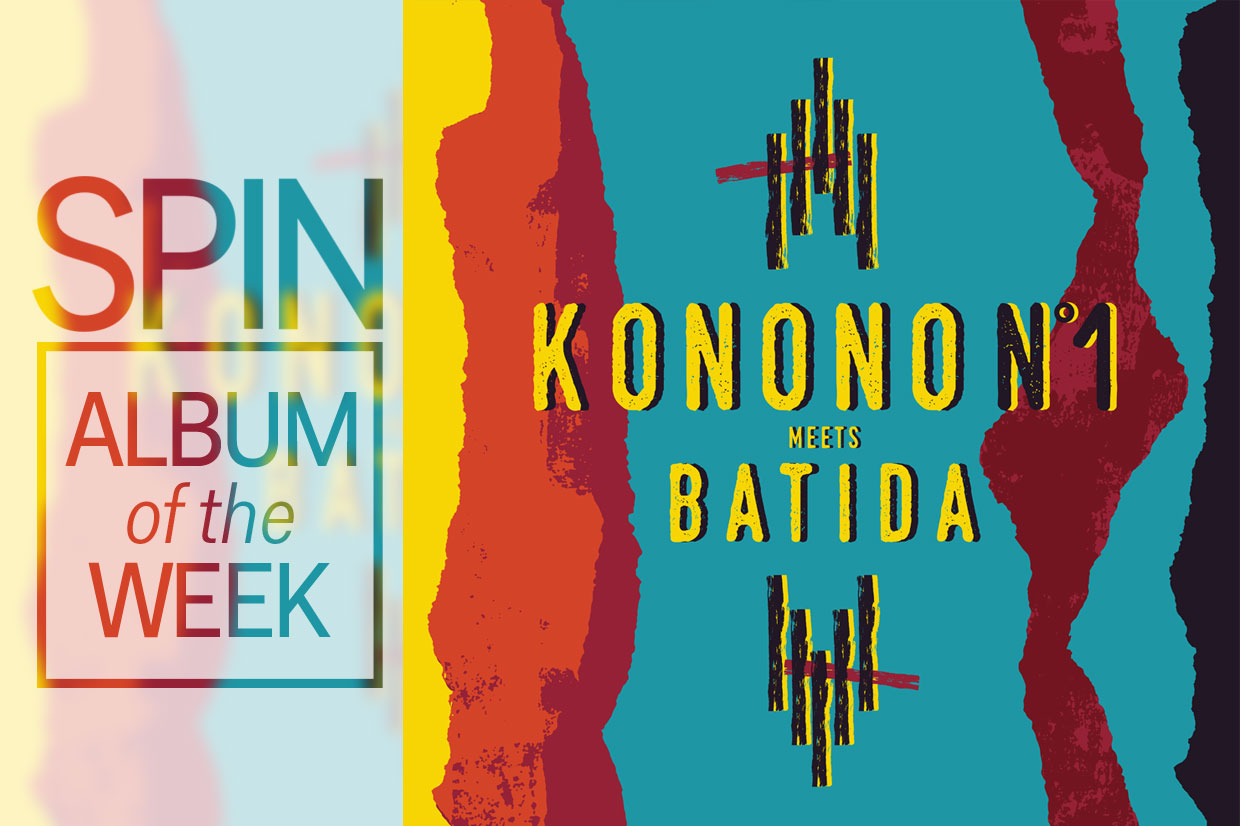Release Date: April 29, 2016
Label: Crammed Discs
Although one should never underestimate the international pleasures of the big beat, Western festival enthusiasm for Kinshasan percussion ensemble Konono Nº1 remains a rather unlikely success story. Especially since nobody can quite agree on what to call their specific musical brand. Forget genre — Wikipedia essentially throws up its hands to heaven, currently linking to an entry for Trance (“a genre of electronic music that developed during the 1990s in Germany”) and a citation-lacking “bazombo.” Others have attempted more noble stabs in the dark: there’s the technically-accurate-if-Eurocentric “electro-acoustic,” Robert Christgau’s poetically apt “paleo-futurist,” and the band’s own preferred approximations of “tradi-modern” and “Congotronics.”
Nomenclature aside, jam-band enthusiasts and dance-music devotees have seized upon the Congolese troupe as fellow travelers in rhythm, in which frenetic and repetitive grooves played on an assortment of traditional Central African instruments and junkyard prizes get run through jerry-rigged amplifiers and retrofitted PA systems for maximum sonic enjoyment. Call it modern African music, to be filed alongside fellow cosmopolitan adventurers Mbongwana Star (also of Kinshasa) and the Saharan blues rock of Tuareg virtuosos.
Only it’s not quite so simple as all that. Despite well-meaning (if at times desperate) comparisons to rock, funk, punk, deep house, and, yes, trance, Konono Nº1 pledge no fealty to the usual Western suspects (or Fela Kuti, for that matter, although Congolese musical titan Franco has a seat of honor at their table). And while the group’s supposed electronica tendencies might seem confirmed by the presence of Lisbon-based producer/DJ Pedro Coquenão (a.k.a. Batida) on the group’s first release in six years, Konono Nº1 Meets Batida thankfully fails both the EDM and IDM sniff test, impervious to either poptimist and/or rockist oversimplifications.
The backstory is worth summarizing: Formed in 1966 by Mingiedi Mawangu, the original acoustic ensemble (full name: L’orchestre folklorique T.P. Konono Nº1 de Mingiedi) leaned heavily on percussive interplay between thumb piano (likembé) and tin cans. Made up of Kinshasan immigrants self-identifying as members of the Bakongo ethnic group, the members hailed from the borderlands of Angola and the Democratic Republic of Congo. Although traces of Congolese rumba and transatlantic Afro-Cuban clave patterns are present in their later recordings, Konono’s music is rooted in a rural genre known as masikulu, an under-recorded style featuring horns fashioned from elephant tusks and percussion (a track entitled “Masikulu” was indeed featured on 2005’s Congotronics album).
First surfacing on a late-’80s Zairean compilation via a 26-minute track recorded in the field in 1978, the group increasingly incorporated electric instrumentation into the lineup, amplifying their likembé with the aid of old car magnets and transforming the PA systems of former Belgian overlords into booming post-colonial “voice-throwers.” Singing or chanting in a rich mix of Kikongo, Lingala, and French, and flush with cash thanks to Mobuto’s authenticité propaganda push, even Konono’s famed amplified distortion owes little to any Western rock traditions and more to a grander African predilection for “buzz.” That is, the fuzzy overtones and acoustic rattle is achieved by affixing seashells, bottle caps, and seed pods to marimba resonators and mbira strings. Sure, there are obvious sonic comparisons to be made between Konono’s junkyard orchestra and the hand-assembled percussive instruments of fellow paleo-futurists Harry Partch and Moondog. But the similarities are mostly accidental. Those cross-rhythms, ostinatos, and inharmonic idiophonic overtones are pure Congo.
Mingiedi Mawangu died in April 2015, so it’s easy to formulate Konono Nº1 Meets Batida as a kind of reset, with son Agustin now at the helm and a Portuguese DJ adding continental flavor. But while this album is inarguably Konono’s slickest offering yet, slick remains a relative term with these lo-fi guys. Batida proves a sympathetic collaborator — any concerns that the producer might overwhelm tracks with the heady Lisbon house/zouk/batucada brew of the batida genre proper are immediately alleviated.
Not that such intrusions would have been entirely unwelcome or for that matter “inauthentic,” what with batida’s obvious debts to Angolan kuduru (a debt artists from M.I.A. to Don Omar have exploited with glee). Still, you’ll most likely require headphones to appreciate the subtle layering and gentle touch deployed by Batida. Kalimbas are indeed re-directed through Big Muff pedals, Papa Juju’s guitar chimes and surges alongside red-lining likembé, and call-and-response vocals do briefly submit to the chopped-and-screwed treatment (“Kinsumba”). But Batida largely sticks with emphasizing the preexisting 4/4 beat intrinsic to most Konono workouts, meaning all those deep-house comparisons for once aren’t completely unwarranted.
Other guests contribute to the Pan-African proceedings, from Bissau-Guinean poet AF Diaphra’s raspy declamations on opener “Nlele Kalusimbiko” to Mozambique’s Selma Uamusse leading the chorus on a handclap-heavy and likembé-less “Bom Dia.” Yet this is mere seasoning. The main attraction remains the core quintet: percussionists Vincent Visi and Jaques Ndofusu Mbiyavanga, vocalist/drummer Pauline Mbuka Nsiala, thumb pianists Menga Waku and the aforementioned Agustin.
The final two tracks strike a perfect balance between Konono’s patented likembé onslaught and Batida’s restrained aesthetic. The boisterous “Kuna America” boasts an eerie electronic hook that seems to have wandered off an old Cabaret Voltaire LP, along with brief yet ghostly horn blats surfacing at song’s end. “Um Nzonzing” ups the ante with a wonderfully chintzy synth bass line, bubbling digital beats, and a clangorous metallic sample ricocheting against guest vocalist Sacerdot’s grunts and exclamations. And all the while, that tireless Konono pulse continues apace. Trance nothing. Follow those polyrhythms, you hear?





